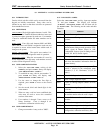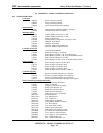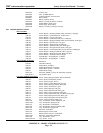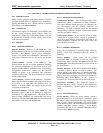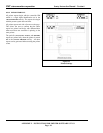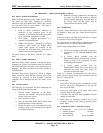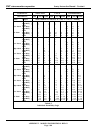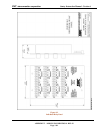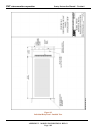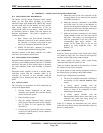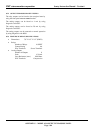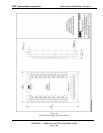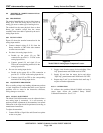
SMC sierra monitor corporation Sentry Instruction Manual - Version 6
APPENDIX F - MODEL 5392 INDIVIDUAL RELAY
Page: 99
8.6 APPENDIX F - MODEL 5392 INDIVIDUAL RELAY
8.6.1 RELAY PANEL DESCRIPTION
Model 5392-00 Individual Relay Panel extends Sentry
low alarm and high alarm capability by providing
individual single pole double throw (SPDT) dry contacts
for each alarm level for each module. The panel is
designed to be installed as follows:
• Rack or Chassis Controllers: Mounted on
stand-offs on the connector panel of the
controller, or installed on the back of spare slots
in 19” instrument shelf Model 5331-00.
• Wall Mount: Supplied pre-installed on a
separate wall mounting panel
• NEMA 4X Enclosure: Mounted on swinging
connector panel beside the display panel.
(When other options are installed in the
enclosure, the Individual Relay panel may be
installed inside the swinging panel)
The panel connects to the Sentry controller via a ribbon
cable.
8.6.2 RELAY PANEL ASSEMBLY
Individual Relay Panels supplied with original Sentry
shipments are factory pre-assembled with the controller.
For NEMA enclosures, the panel is fully installed prior to
shipment. For other controllers minor final assembly is
described below.
Individual Relay Panels supplied as add-on to original
Sentry controllers require that the connector panel of the
controller be removed so that threaded stand-offs
(supplied) can be installed onto the four corners of the
panel.
8.6.3 INSTALLATION
The following are instructions for final installation and
wiring of the Individual Relay panel:
1. Perform normal installation of the Sentry
controller and modules and perform function
checks of the basic system.
2. Power down the system.
3. Plug the Individual Relay Panel ribbon cable
into the connector on the controller.
4. Mount the panel on the four stand-offs on the
connector panel of the controller [not required
for NEMA enclosures].
5. Make the necessary connections to the high and
low relays for each of the modules as required
for the particular application. Note that these are
dry contact relays and that power must be
connected from an external source.
8.6.4 OPERATION
Figure 8-2 shows the location of the sixteen relays which
are marked as "high" and "low" alarms for the respective
modules.
When any module connected to the controller is in alarm
it's respective relay will be energized.
To operate alarms or other auxiliary equipment connect to
the required relays according to the module number.
Several logic configurations are available:
• The user can configure each alarm as latching or
non-latching via the CHANGE MODULE menu
activity.
• A factory option available with the
Enhancement Package allows all high, or all low
alarms, or both, to be configured for alarm
acknowledge when latched.
• A factory option available with the
Enhancement Package allows alarm states to be
combined into zones and voting groups for
activation of individual relays.
Table 8-2 is helpful for determining the relay actions
which will occur under various alarm conditions based on
the user’s configuration.
To use the table:
1. Select one of the nine possible combinations of high
and low alarm relay configurations in the top two
lines across the table.
2. Select one main block of the three alarm status
scenarios from the left column.
3. Trace the relay and LED status conditions for each
change in alarm status.
4. Where there are secondary columns, move to the
secondary columns at any point by pressing Alarm
Reset, Enter.
8.6.5 INDIVIDUAL RELAY SPECIFICATIONS
• Dimensions 6.97” X 4.2” X 1.5” (HWD)
• Number of Relays 16 SPDT
• Contact Rating 6A
• Wire Terminals Screw Terminals



